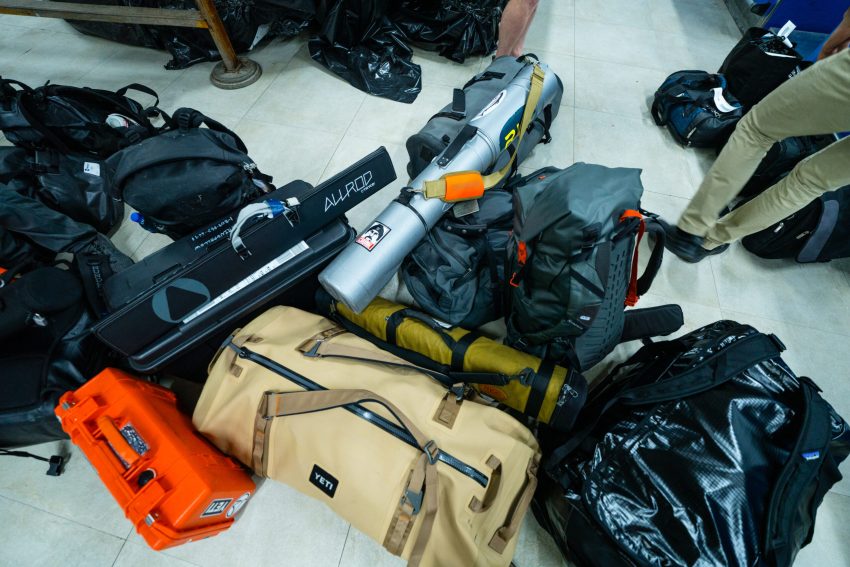There’s nothing quite like a day out on the water, rod in hand, waiting for that satisfying tug on the line. But nothing kills the mood faster than realizing you forgot something important. Whether you’re a weekend warrior or just getting started with fishing, having the right gear can make or break your trip.
So let’s dive into what you really need to pack — starting with the most underrated but game-changing tool in your kit.
1. Finman Fishing Tool – The One You Should Never Leave Behind
If there’s one tool that earns a permanent spot in your tackle box, it’s the Finman.
This isn’t your typical fishing gadget. It’s a multi-tool built specifically for anglers, combining everything you need in one lightweight, compact piece. We’re talking about a sharp line cutter, hook remover, crimper, split ring opener — even a knot-tightening tool. It’s made of durable stainless steel and designed for real fishing conditions: wet hands, cold mornings, and fast action.
Think of it as your all-in-one field assistant. No more fumbling around with five different tools or cutting line with your teeth (we’ve all done it — no judgment). With the Finman, you just reach in your pocket and you’re ready for anything.
2. Fishing Rod and Reel – Pick What Fits Your Style
Your rod and reel combo is the heart of your setup. Choose it based on the kind of fishing you’ll be doing.
Going after bass in a freshwater lake? A spinning rod will do just fine. Headed offshore? A heavier baitcasting combo might be the better call. If you’re traveling, telescopic or collapsible rods are super convenient — they fit right in a backpack or suitcase.
Don’t forget to check your reel’s drag and make sure the line is spooled properly before you head out. A little prep here goes a long way.
3. Tackle and Bait – The Right Tools for the Right Fish
You can’t catch much without the right bait and tackle. This includes:
- Hooks (a few sizes, depending on your target species)
- Sinkers or weights to get your bait down
- Bobbers to track bites
- Swivels to prevent line twist
- A small selection of lures (soft plastics, spinners, crankbaits)
Live bait like worms or minnows is great for beginners and kids. Artificial lures are fun to experiment with and can be more convenient on longer trips.
Keep everything organized in a tackle box — preferably one with adjustable compartments so you can customize it over time.
4. Fishing Line – Always Carry Extra
You’d be surprised how often fishing line breaks at the worst moment — maybe a snag on a log or a fish with too much fight. Always bring an extra spool.
Monofilament is stretchy and beginner-friendly. Fluorocarbon is more invisible underwater. Braided line is strong and sensitive, ideal for pulling fish out of thick cover.
The best anglers don’t just pick one — they match their line to the environment and the fish.
5. Don’t Forget Your Fishing License
This is easily overlooked but super important. Most places require a license or permit to fish, and fines can be steep if you’re caught without one.
Check your local regulations ahead of time. Many states offer affordable day passes online or even via mobile apps. Print it or save a digital copy on your phone just in case.
6. A Good Landing Net
When you finally hook the big one, don’t risk losing it at the last second.
A quality net makes landing your fish faster, cleaner, and safer — especially if you’re practicing catch and release. Go for rubber-coated or knotless nets. They’re gentler on fish and won’t tangle your hooks.
7. Backup Tools (if you don’t have a Finman)
If, for some reason, you don’t yet have a Finman, you’ll need to carry:
- A separate line cutter
- Needle-nose pliers
- Split ring pliers
- Crimping tool
- Hook remover
And yes, that’s a lot of gear for one job. That’s why Finman earns the top spot — it simplifies your kit and speeds up your setup.
8. Cooler or Bucket for Your Catch
If you’re keeping your catch, make sure you have somewhere clean and cool to store it.
- A simple bucket with a lid works fine for freshwater panfish.
- A cooler with ice is better for longer trips or bigger fish.
- If you plan to use live bait, a separate aerated bucket helps keep them lively.
9. Clothing and Personal Gear
Fishing is often about patience — and patience is a lot easier when you’re comfortable.
Bring:
- A hat to block the sun
- Polarized sunglasses (these also help you see into the water)
- Sunscreen (even on cloudy days)
- Insect repellent
- A windbreaker or light raincoat (weather changes fast on the water)
- Water and snacks — dehydration and hunger sneak up quickly outdoors
Also, pack a small dry bag to protect your wallet, phone, and keys from water.
10. Safety and Navigation Must-Haves
Even on short trips, don’t forget safety.
A small first aid kit with bandages, antiseptic, and motion sickness tablets is worth its weight in gold. A flashlight or headlamp is essential if you’re heading out early or staying late. And if you’re fishing somewhere unfamiliar, bring a GPS device or a fully charged phone with an offline map.
Fishing alone? Let someone know where you’re going and when you’ll be back. Simple step, big peace of mind.
Final Thoughts
Fishing is one of those rare hobbies that’s both deeply peaceful and wildly exciting. But like any outdoor activity, it rewards those who come prepared.
So next time you plan a trip, use this guide to make sure you’ve got everything you need. Start with your Finman tool, build around it, and you’ll be set for success — whether you’re casting from the bank, the pier, or a boat out in open water.

